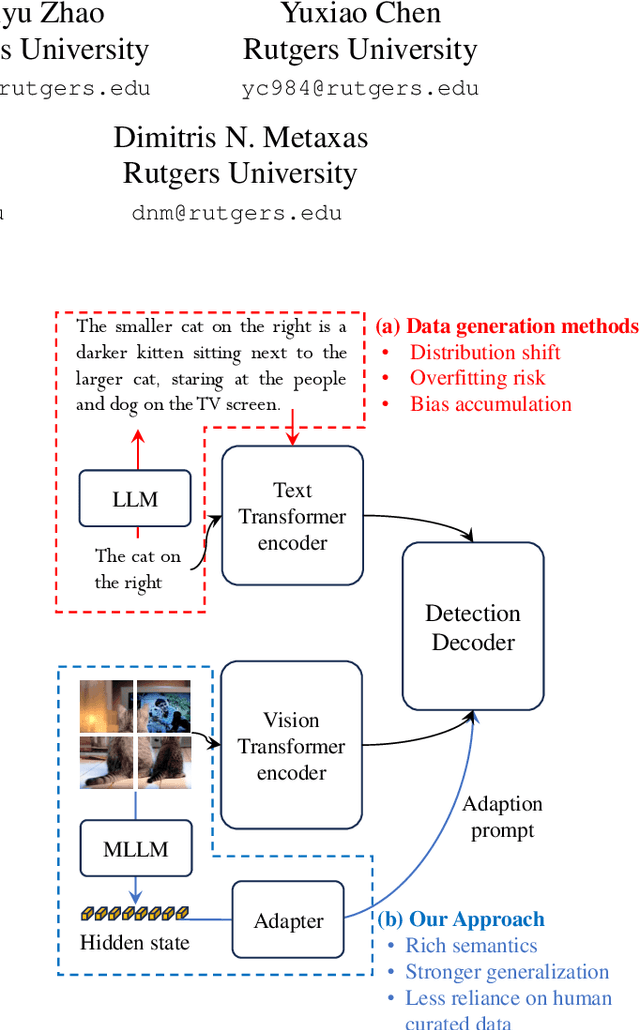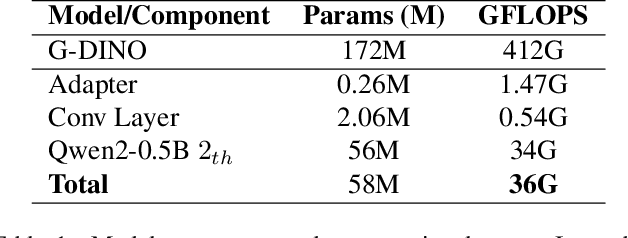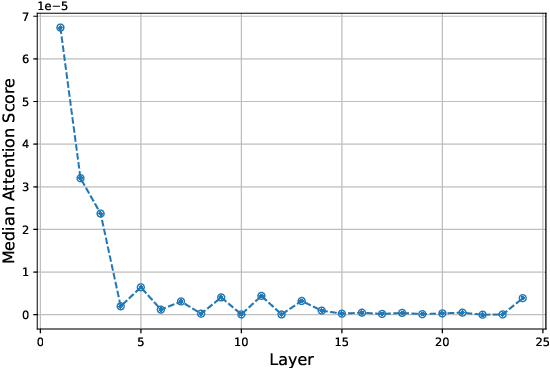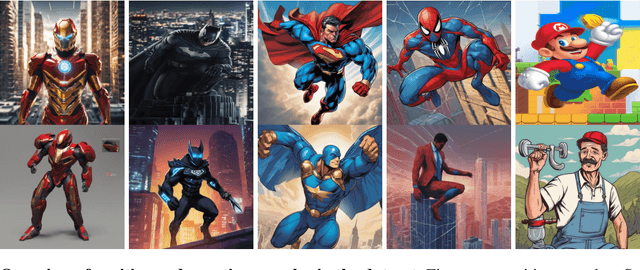Zhenting Wang
Read the Scene, Not the Script: Outcome-Aware Safety for LLMs
Oct 05, 2025Abstract:Safety-aligned Large Language Models (LLMs) still show two dominant failure modes: they are easily jailbroken, or they over-refuse harmless inputs that contain sensitive surface signals. We trace both to a common cause: current models reason weakly about links between actions and outcomes and over-rely on surface-form signals, lexical or stylistic cues that do not encode consequences. We define this failure mode as Consequence-blindness. To study consequence-blindness, we build a benchmark named CB-Bench covering four risk scenarios that vary whether semantic risk aligns with outcome risk, enabling evaluation under both matched and mismatched conditions which are often ignored by existing safety benchmarks. Mainstream models consistently fail to separate these risks and exhibit consequence-blindness, indicating that consequence-blindness is widespread and systematic. To mitigate consequence-blindness, we introduce CS-Chain-4k, a consequence-reasoning dataset for safety alignment. Models fine-tuned on CS-Chain-4k show clear gains against semantic-camouflage jailbreaks and reduce over-refusal on harmless inputs, while maintaining utility and generalization on other benchmarks. These results clarify the limits of current alignment, establish consequence-aware reasoning as a core alignment goal and provide a more practical and reproducible evaluation path.
EPO: Entropy-regularized Policy Optimization for LLM Agents Reinforcement Learning
Sep 26, 2025Abstract:Training LLM agents in multi-turn environments with sparse rewards, where completing a single task requires 30+ turns of interaction within an episode, presents a fundamental challenge for reinforcement learning. We identify a critical failure mode unique to this setting: the exploration-exploitation cascade failure. This cascade begins with early-stage policy premature convergence, where sparse feedback causes agents to commit to flawed, low-entropy strategies. Subsequently, agents enter late-stage policy collapse, where conventional entropy regularization becomes counterproductive, promoting chaotic exploration that destabilizes training. We propose Entropy-regularized Policy Optimization (EPO), a general framework that breaks this failure cycle through three synergistic mechanisms: (1) adopting entropy regularization in multi-turn settings to enhance exploration, (2) an entropy smoothing regularizer that bounds policy entropy within historical averages to prevent abrupt fluctuations, and (3) adaptive phase-based weighting that balances exploration and exploitation across training. Our analysis justifies that EPO guarantees monotonically decreasing entropy variance while maintaining convergence. EPO achieves up to 152% performance improvement on ScienceWorld and up to 19.8% on ALFWorld. Our work demonstrates that multi-turn sparse-reward settings require fundamentally different entropy control than traditional RL, with broad implications for LLM agent training.
DUMP: Automated Distribution-Level Curriculum Learning for RL-based LLM Post-training
Apr 13, 2025Abstract:Recent advances in reinforcement learning (RL)-based post-training have led to notable improvements in large language models (LLMs), particularly in enhancing their reasoning capabilities to handle complex tasks. However, most existing methods treat the training data as a unified whole, overlooking the fact that modern LLM training often involves a mixture of data from diverse distributions-varying in both source and difficulty. This heterogeneity introduces a key challenge: how to adaptively schedule training across distributions to optimize learning efficiency. In this paper, we present a principled curriculum learning framework grounded in the notion of distribution-level learnability. Our core insight is that the magnitude of policy advantages reflects how much a model can still benefit from further training on a given distribution. Based on this, we propose a distribution-level curriculum learning framework for RL-based LLM post-training, which leverages the Upper Confidence Bound (UCB) principle to dynamically adjust sampling probabilities for different distrubutions. This approach prioritizes distributions with either high average advantage (exploitation) or low sample count (exploration), yielding an adaptive and theoretically grounded training schedule. We instantiate our curriculum learning framework with GRPO as the underlying RL algorithm and demonstrate its effectiveness on logic reasoning datasets with multiple difficulties and sources. Our experiments show that our framework significantly improves convergence speed and final performance, highlighting the value of distribution-aware curriculum strategies in LLM post-training. Code: https://github.com/ZhentingWang/DUMP.
Scaling Laws of Scientific Discovery with AI and Robot Scientists
Mar 28, 2025Abstract:The rapid evolution of scientific inquiry highlights an urgent need for groundbreaking methodologies that transcend the limitations of traditional research. Conventional approaches, bogged down by manual processes and siloed expertise, struggle to keep pace with the demands of modern discovery. We envision an autonomous generalist scientist (AGS) system-a fusion of agentic AI and embodied robotics-that redefines the research lifecycle. This system promises to autonomously navigate physical and digital realms, weaving together insights from disparate disciplines with unprecedented efficiency. By embedding advanced AI and robot technologies into every phase-from hypothesis formulation to peer-ready manuscripts-AGS could slash the time and resources needed for scientific research in diverse field. We foresee a future where scientific discovery follows new scaling laws, driven by the proliferation and sophistication of such systems. As these autonomous agents and robots adapt to extreme environments and leverage a growing reservoir of knowledge, they could spark a paradigm shift, pushing the boundaries of what's possible and ushering in an era of relentless innovation.
LED: LLM Enhanced Open-Vocabulary Object Detection without Human Curated Data Generation
Mar 18, 2025



Abstract:Large foundation models trained on large-scale visual-text data can significantly enhance Open Vocabulary Object Detection (OVD) through data generation. However, this may lead to biased synthetic data and overfitting to specific configurations. It can sidestep biases of manually curated data generation by directly leveraging hidden states of Large Language Models (LLMs), which is surprisingly rarely explored. This paper presents a systematic method to enhance visual grounding by utilizing decoder layers of the LLM of a MLLM. We introduce a zero-initialized cross-attention adapter to enable efficient knowledge transfer from LLMs to object detectors, an new approach called LED (LLM Enhanced Open-Vocabulary Object Detection). We demonstrate that intermediate hidden states from early LLM layers retain strong spatial-semantic correlations that are beneficial to grounding tasks. Experiments show that our adaptation strategy significantly enhances the performance on complex free-form text queries while remaining the same on plain categories. With our adaptation, Qwen2-0.5B with Swin-T as the vision encoder improves GroundingDINO by 2.33% on Omnilabel, at the overhead of 8.7% more GFLOPs. Qwen2-0.5B with a larger vision encoder can further boost the performance by 6.22%. We further validate our design by ablating on varied adapter architectures, sizes of LLMs, and which layers to add adaptation.
Can Large Vision-Language Models Detect Images Copyright Infringement from GenAI?
Feb 23, 2025



Abstract:Generative AI models, renowned for their ability to synthesize high-quality content, have sparked growing concerns over the improper generation of copyright-protected material. While recent studies have proposed various approaches to address copyright issues, the capability of large vision-language models (LVLMs) to detect copyright infringements remains largely unexplored. In this work, we focus on evaluating the copyright detection abilities of state-of-the-art LVLMs using a various set of image samples. Recognizing the absence of a comprehensive dataset that includes both IP-infringement samples and ambiguous non-infringement negative samples, we construct a benchmark dataset comprising positive samples that violate the copyright protection of well-known IP figures, as well as negative samples that resemble these figures but do not raise copyright concerns. This dataset is created using advanced prompt engineering techniques. We then evaluate leading LVLMs using our benchmark dataset. Our experimental results reveal that LVLMs are prone to overfitting, leading to the misclassification of some negative samples as IP-infringement cases. In the final section, we analyze these failure cases and propose potential solutions to mitigate the overfitting problem.
ADO: Automatic Data Optimization for Inputs in LLM Prompts
Feb 17, 2025Abstract:This study explores a novel approach to enhance the performance of Large Language Models (LLMs) through the optimization of input data within prompts. While previous research has primarily focused on refining instruction components and augmenting input data with in-context examples, our work investigates the potential benefits of optimizing the input data itself. We introduce a two-pronged strategy for input data optimization: content engineering and structural reformulation. Content engineering involves imputing missing values, removing irrelevant attributes, and enriching profiles by generating additional information inferred from existing attributes. Subsequent to content engineering, structural reformulation is applied to optimize the presentation of the modified content to LLMs, given their sensitivity to input format. Our findings suggest that these optimizations can significantly improve the performance of LLMs in various tasks, offering a promising avenue for future research in prompt engineering. The source code is available at https://anonymous.4open.science/r/ADO-6BC5/
The Hidden Life of Tokens: Reducing Hallucination of Large Vision-Language Models via Visual Information Steering
Feb 05, 2025



Abstract:Large Vision-Language Models (LVLMs) can reason effectively over both textual and visual inputs, but they tend to hallucinate syntactically coherent yet visually ungrounded contents. In this paper, we investigate the internal dynamics of hallucination by examining the tokens logits rankings throughout the generation process, revealing three key patterns in how LVLMs process information: (1) gradual visual information loss -- visually grounded tokens gradually become less favored throughout generation, and (2) early excitation -- semantically meaningful tokens achieve peak activation in the layers earlier than the final layer. (3) hidden genuine information -- visually grounded tokens though not being eventually decided still retain relatively high rankings at inference. Based on these insights, we propose VISTA (Visual Information Steering with Token-logit Augmentation), a training-free inference-time intervention framework that reduces hallucination while promoting genuine information. VISTA works by combining two complementary approaches: reinforcing visual information in activation space and leveraging early layer activations to promote semantically meaningful decoding. Compared to existing methods, VISTA requires no external supervision and is applicable to various decoding strategies. Extensive experiments show that VISTA on average reduces hallucination by abount 40% on evaluated open-ended generation task, and it consistently outperforms existing methods on four benchmarks across four architectures under three decoding strategies.
LoR-VP: Low-Rank Visual Prompting for Efficient Vision Model Adaptation
Feb 04, 2025Abstract:Visual prompting has gained popularity as a method for adapting pre-trained models to specific tasks, particularly in the realm of parameter-efficient tuning. However, existing visual prompting techniques often pad the prompt parameters around the image, limiting the interaction between the visual prompts and the original image to a small set of patches while neglecting the inductive bias present in shared information across different patches. In this study, we conduct a thorough preliminary investigation to identify and address these limitations. We propose a novel visual prompt design, introducing Low-Rank matrix multiplication for Visual Prompting (LoR-VP), which enables shared and patch-specific information across rows and columns of image pixels. Extensive experiments across seven network architectures and four datasets demonstrate significant improvements in both performance and efficiency compared to state-of-the-art visual prompting methods, achieving up to 6 times faster training times, utilizing 18 times fewer visual prompt parameters, and delivering a 3.1% improvement in performance. The code is available as https://github.com/jincan333/LoR-VP.
MLLM-as-a-Judge for Image Safety without Human Labeling
Dec 31, 2024



Abstract:Image content safety has become a significant challenge with the rise of visual media on online platforms. Meanwhile, in the age of AI-generated content (AIGC), many image generation models are capable of producing harmful content, such as images containing sexual or violent material. Thus, it becomes crucial to identify such unsafe images based on established safety rules. Pre-trained Multimodal Large Language Models (MLLMs) offer potential in this regard, given their strong pattern recognition abilities. Existing approaches typically fine-tune MLLMs with human-labeled datasets, which however brings a series of drawbacks. First, relying on human annotators to label data following intricate and detailed guidelines is both expensive and labor-intensive. Furthermore, users of safety judgment systems may need to frequently update safety rules, making fine-tuning on human-based annotation more challenging. This raises the research question: Can we detect unsafe images by querying MLLMs in a zero-shot setting using a predefined safety constitution (a set of safety rules)? Our research showed that simply querying pre-trained MLLMs does not yield satisfactory results. This lack of effectiveness stems from factors such as the subjectivity of safety rules, the complexity of lengthy constitutions, and the inherent biases in the models. To address these challenges, we propose a MLLM-based method includes objectifying safety rules, assessing the relevance between rules and images, making quick judgments based on debiased token probabilities with logically complete yet simplified precondition chains for safety rules, and conducting more in-depth reasoning with cascaded chain-of-thought processes if necessary. Experiment results demonstrate that our method is highly effective for zero-shot image safety judgment tasks.
 Add to Chrome
Add to Chrome Add to Firefox
Add to Firefox Add to Edge
Add to Edge